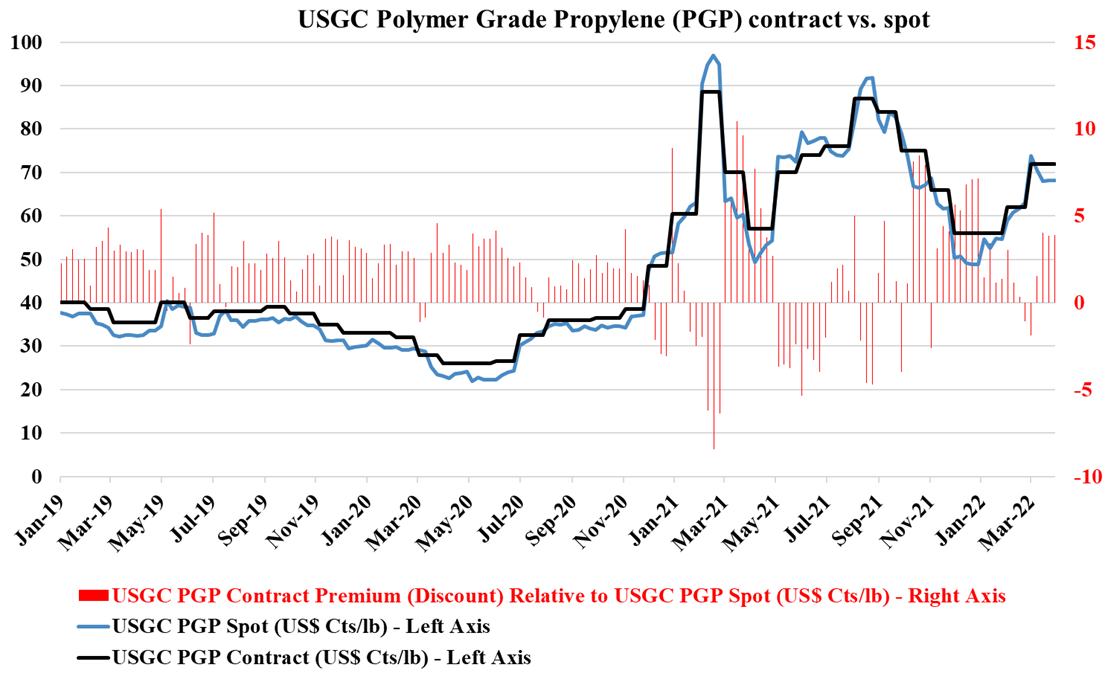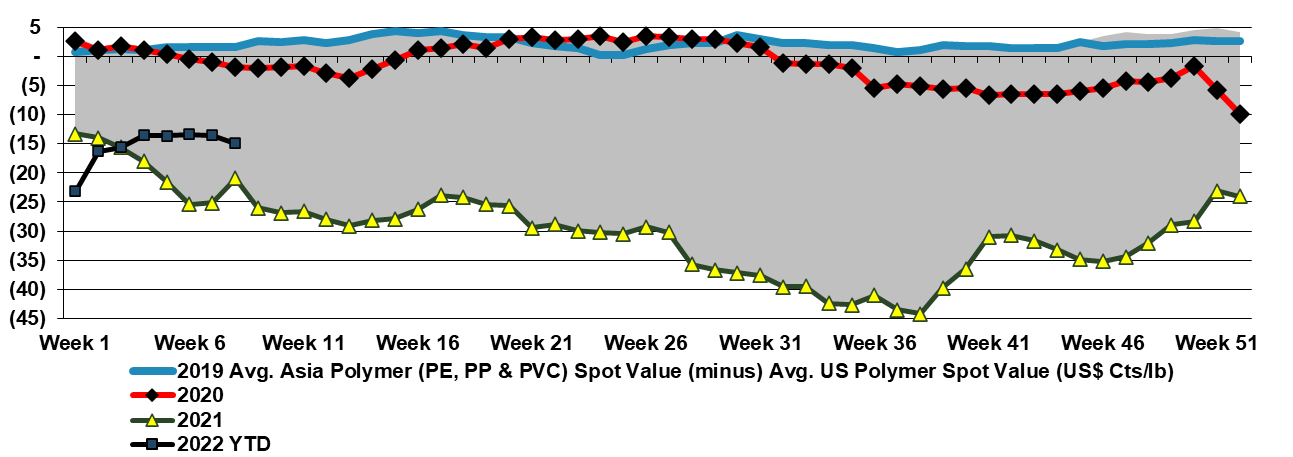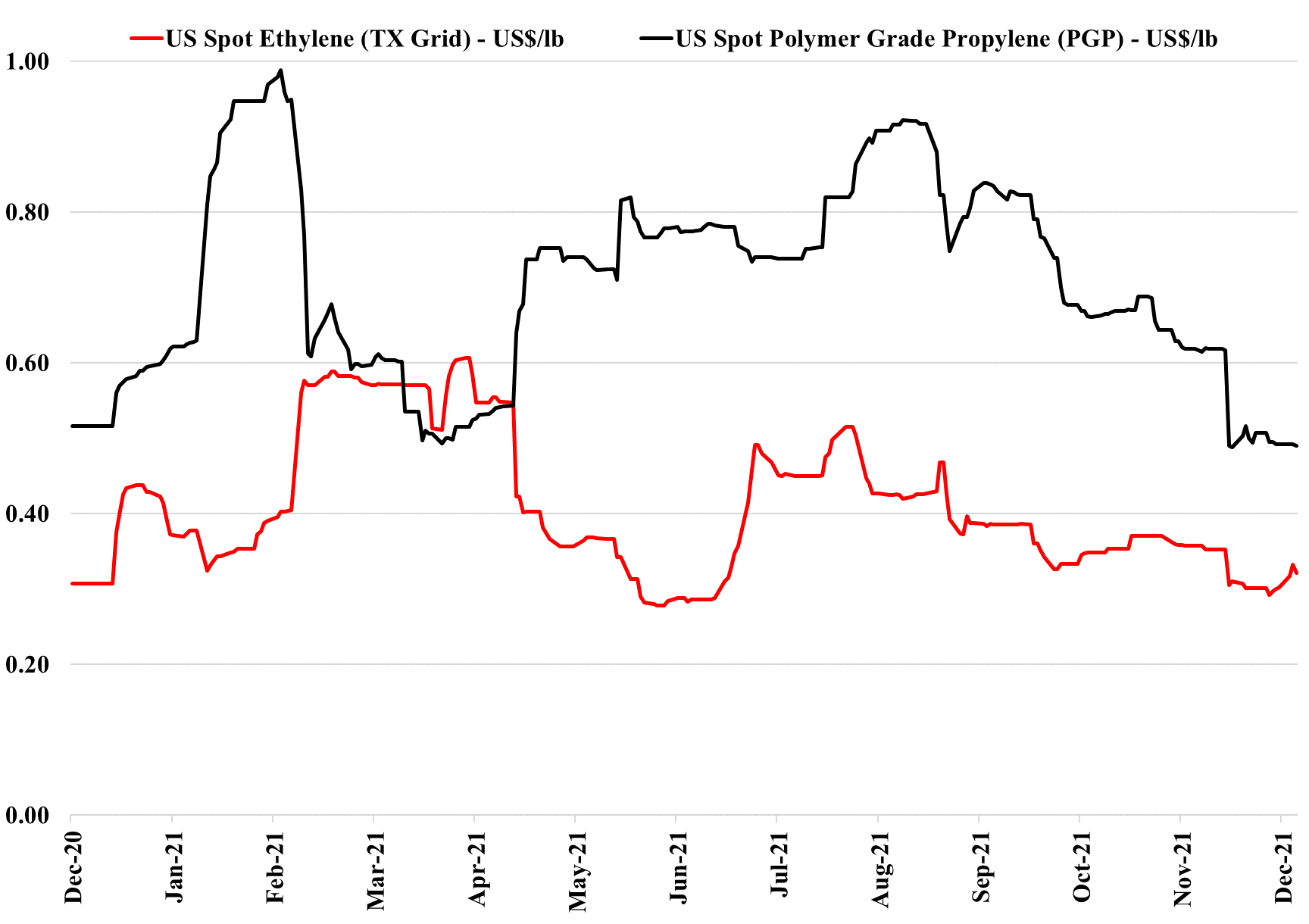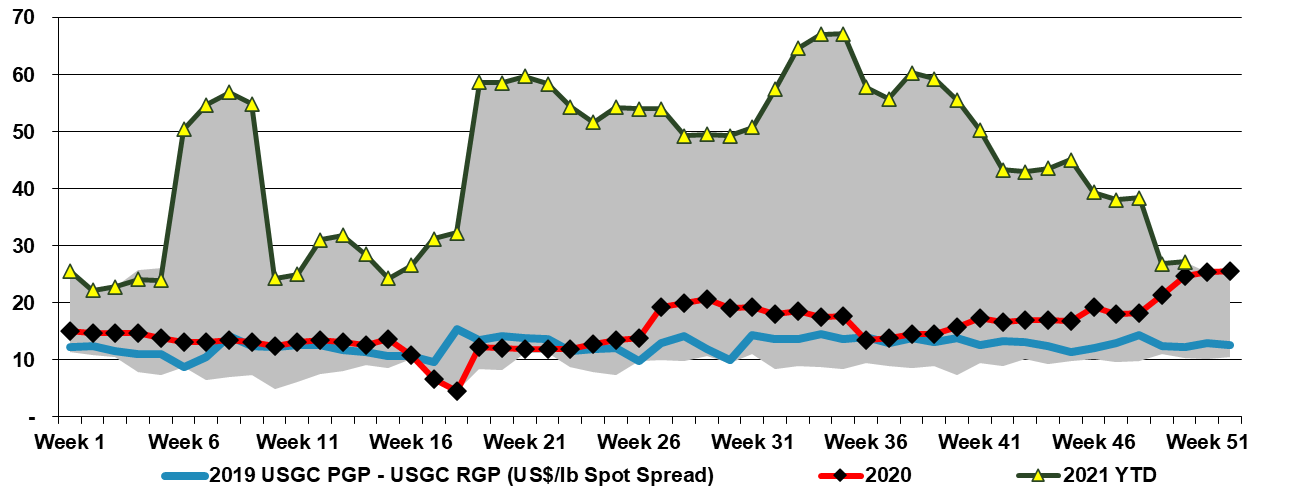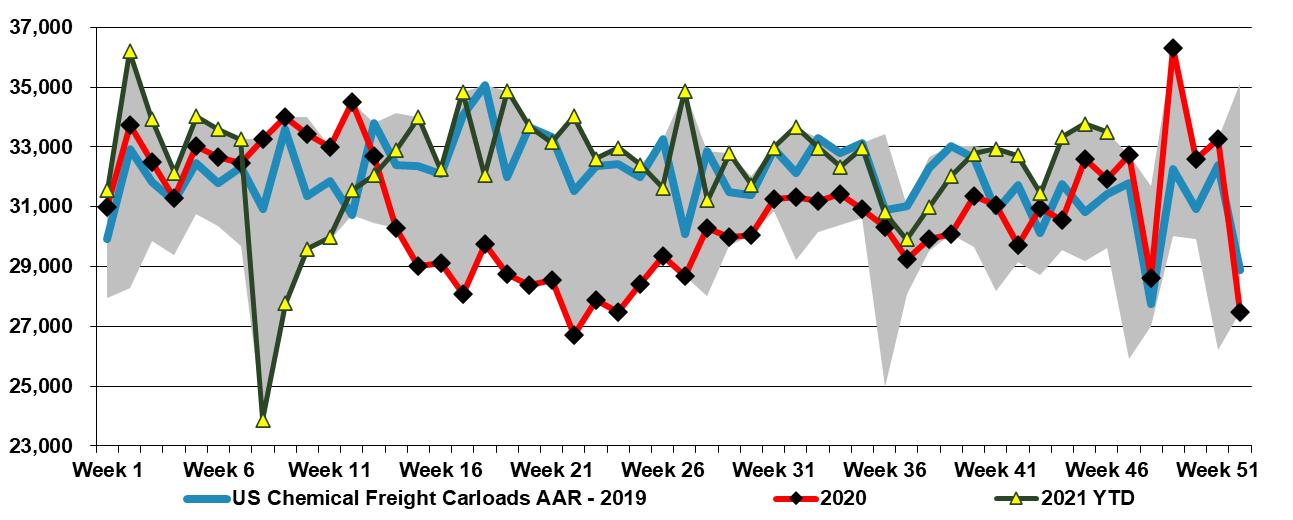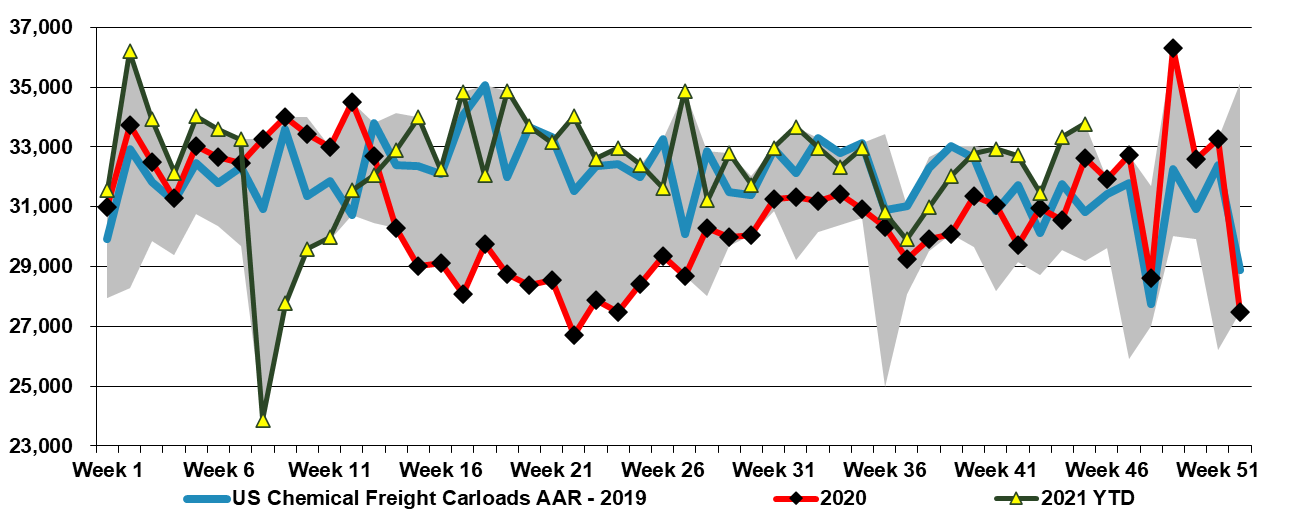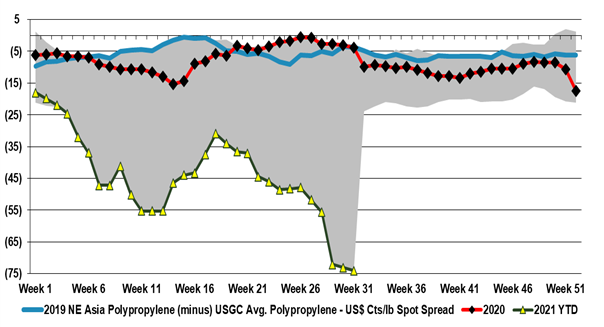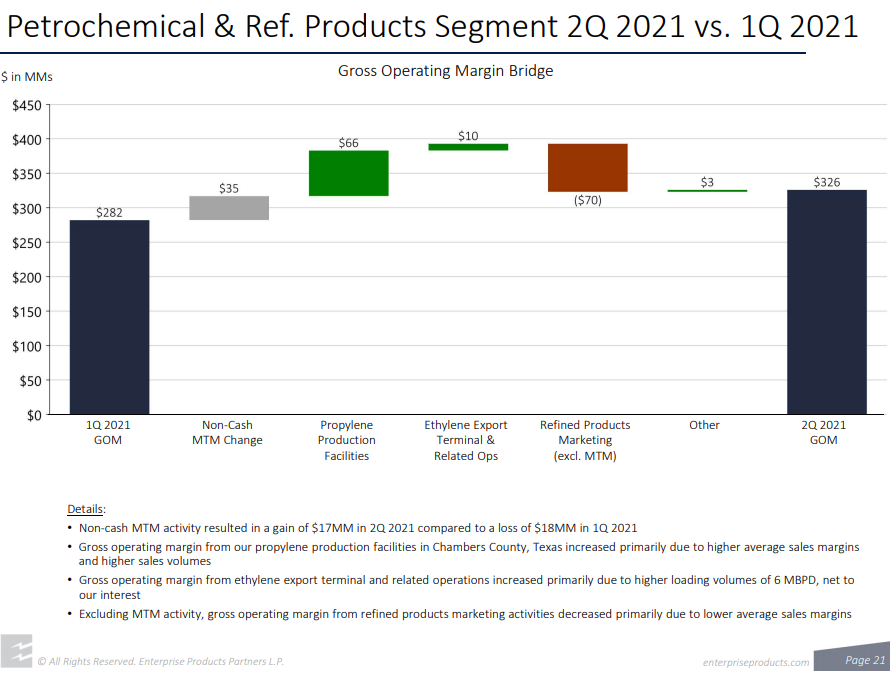We are seeing some monomer price weakness in the US, despite the rising costs. For ethylene, this is likely because of increased supplies (new capacity and turnarounds ending) and all capacity to consume running at full rates, including the export terminals. There is plenty of margin in exporting ethylene today and US prices are not falling because they need to find another buyer internationally. We could see some opportunistic buying for inventory at these prices, especially if you believe that the conflict in Ukraine is not ending soon and also if you are concerned about more extreme weather as we move through the summer in the south of the US.
Evidence Of Oversupply For Ethylene. Not The Case For Propylene
Mar 31, 2022 2:33:16 PM / by Cooley May posted in Chemicals, Propylene, Ethylene, propane, PGP, Propylene Derivatives, PDH, monomers, propylene prices, monomer prices
Polymer Prices Are Responding To Higher Costs, But Asia Remains Challenged
Mar 2, 2022 1:23:57 PM / by Cooley May posted in Chemicals, Polymers, Polypropylene, Ethylene, polymer pricing, ethylene producers, Propylene Derivatives, PDH, US polymer prices, US propylene, US Polymers, propane prices, crude oil, propylene prices
The upwards pressure on crude oil prices will likely drive propane prices much higher in the near term and this will significantly impact propane dehydrogenation (PDH) costs in the US and put further upward pressure on propylene prices and prices for propylene derivatives. Note in the exhibit below that US polymer prices are turning slightly more positive relative to Asia again. While some of this will be cost-based issues in the US, especially for polypropylene, higher freight rates (again) continue to make it difficult for producers in Asia to maintain attractive operating rates and make it harder to push prices higher to reflect what are now rapidly escalating costs. The oil moves today may result in more capacity closures in Asia, which should lead to better pricing, but as we noted in our Weekly on Monday (and likely more extreme today) outside of US ethane-based ethylene producers, no one is making money producing ethylene today. Prices are going higher.
Some Holiday Stability For Ethylene And Propylene
Dec 22, 2021 1:55:27 PM / by Cooley May posted in Chemicals, Ethylene, Chemical Industry, US ethylene, ethylene exports, PDH, US propylene, feedstocks, US propylene demand
We have seen relative stability in US spot ethylene and propylene prices for several weeks now, despite some volatility in feedstock markets. Ethylene likely has significant export support in that there are complexes in Asia that are net short of ethylene and where derivative production can be increased if ethylene is available at the right price. There are also displacement opportunities if US ethylene can be delivered to importers in Asia at lower prices than local production costs. This is broadly the case today and there may even be select opportunities in Europe. In Asia it is likely easier, as the buyer would be replacing an alternate supplier. In Europe, most potential buyers would be looking at cutting back their own local production and that is a more marginal decision given the impact on unit economics of lower operating rates. US propylene demand remains high, but prices are now settling closer to PDH costs, although not close enough to encourage anyone to slow production. See more in today's daily report!
Refinery Propylene Remains A Cheap Source, If You Can Find It...
Dec 15, 2021 2:09:46 PM / by Cooley May posted in Hydrogen, Chemicals, Polymers, Propylene, Polypropylene, Emissions, CP Chemical, carbon footprint, ethane, PDH, ethylene capacity, polypropylene demand, refinery, Refinery Propylene, ethylene demand, surplus refinery propylene, polymer recycling, propylene splitter
The CP Chem propylene splitter announcement linked suggests that CP Chem expects surplus refinery propylene to be around for the long-term, and likely has supply lined up from the parent companies. However, this is still a bit of a gamble unless both parents see a scenario where they would change catalysts on FCC units longer-term and run at higher severity for more propylene and more hydrogen. This project looked a lot better only a few weeks ago than it does today – based on the spread in the Exhibit below, but propylene demand continues to grow faster than ethylene demand in the US and with all incremental ethylene capacity based on ethane, propylene consumers either have to choose the path from refineries or invest in on purpose PDH. PDH is an energy-intensive process with a large carbon footprint, and splitting refinery propylene likely looks far less problematic from an emissions perspective, especially if there is surplus process heat on-site. In our ESG report today we talk about polymer recycling into new end markets, but polypropylene may see more direct substitution, especially if we see consumables related polypropylene recycled into durable polypropylene markets. This might dent demand growth for polypropylene going forward, but probably not meaningfully.
Chemical Supply Increases And US Prices Weaken
Nov 19, 2021 12:35:27 PM / by Cooley May posted in Chemicals, Polymers, PVC, Polyethylene, Plastics, Polypropylene, ExxonMobil, polymer buyers, railcar shipments, Supply Chain, Dow, propane, PDH, ethylene capacity, US polymer prices, US Polymers, propylene prices, energy prices, chemicalindustry, plasticsindustry, spot market, cost arbitrage
US rail data for chemicals remain at the 5-year highs and have been there for almost 2 months. This is working its way into the supply chain and we are seeing weakness in US polymer prices across the board, except for PVC. US spot polymer prices are in a bit of a “no man's land” right now as they would need to drop significantly to find incremental demand offshore, given US premiums to the rest of the world. We believe that most of the volume leaving the US is doing so within company-specific businesses – ExxonMobil supplying ExxonMobil customers, Dow supplying Dow customers, etc, and consequently, these shipments do not show up in the spot market.
An Expected Year-End Surge in US Production - Will It Be Too Much?
Nov 12, 2021 3:09:43 PM / by Cooley May posted in Chemicals, Polymers, Propylene, Polyethylene, Ethylene, olefins, PDH, exports, chemicalindustry, plasticsindustry, railcar volumes
In the first Exhibit below we show a 5-year high in chemical rail-car movements. We have noted in research since early October that 4Q production in the US could be very high because of a combination of available capacity – following a year of weather-related delays – and very attractive margins and demand. We have been at the high end of rail car volumes for most of the quarter, and this may be part of the reason why we are seeing some price weakness for polymers in the US. Most of the polyethylene exported from the US moves from the manufacturing site to the export port via rail, so increased exports would also drive higher rail car numbers. As long as pricing and margins remain high and customer demand robust, we would expect these higher volumes to continue. This does not make us any less concerned that somewhere in the chain there is now an inventory build going on and that fortunes could reverse in 2022.
Polypropylene: Surpluses In Asia May Have To Stay In Asia
Aug 6, 2021 2:30:51 PM / by Cooley May posted in Polypropylene, Ethylene, propane, carbon emissions, polypropylene margins, PDH, Polypropylene Surplus, PP
The ICIS polypropylene analysis in the linked headline is interesting in that it shows the vulnerability of the traditional exporters of polypropylene to China if China goes ahead with the longer-term capacity announcements that local producers have made to date. The analysis suggests that this development will move China moves from deficit to surplus in PP.. Where the analysis may be wrong in our view is that the current high price of propane, low ethylene margins, and low local polypropylene margins could put portions of the planned capacity on hold, and while it may come eventually, the phasing of additions may be different. Current economics make any ethylene (and associated propylene) investments hard to justify and the same with PDH. In the past, we have seen China pull back investments when economics have not worked – most notably in the early part of the last decade when oil prices were very high. At that time China moved to projects based on coal, and while that may re-emerge, local oversupply, in general, will slow things down in our view, and pushing back towards coal may not fit with whatever carbon emission targets China will set ahead of the COP26 meeting.
Propylene: Market Tightness and Derivatives Momentum
Jul 28, 2021 12:57:41 PM / by Cooley May posted in Chemicals, Propylene, petrochemicals, Propylene Derivatives, Enterprise Products, PDH
The Enterprise Products propylene numbers are impressive when you considering that its PDH facility was closed for a significant portion of the quarter, and while this likely contributed to tightness in the market, the company could have made even more money in 2Q. The results show the clear tightness in the propylene market in the US and reflect the very strong momentum in propylene derivatives, which is broad-based although we have tended to focus on polypropylene in recent work. See more in today's daily report.


